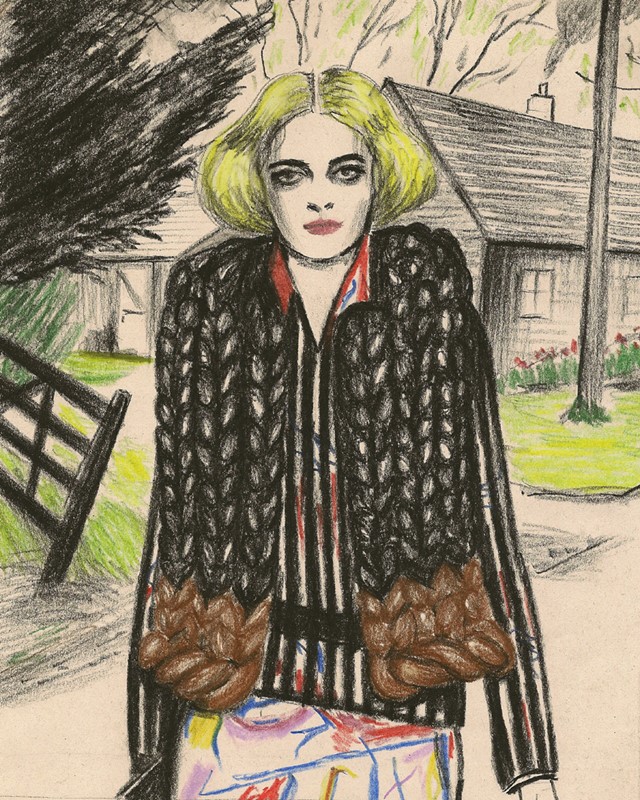Not content with pioneering sophisticated and futuristic technofashions this season, designers have also taken that pioneer spirit and interpreted it in a rather more literal way, using homely knits to spin a yarn or two about the mores of modern
Not content with pioneering sophisticated and futuristic technofashions this season, designers have also taken that pioneer spirit and interpreted it in a rather more literal way, using homely knits to spin a yarn or two about the mores of modern consumption.
At Balenciaga Nicolas Ghesquière turned out chunky cable knit gilets, pearled and woven from leather, vinyl and PVC and polished to sheeny effect. In short, they looked as little like genuine threads as it is possible for the man-made and machine-hewn to resemble anything even vaguely organic.
The point here of course is one of superficiality and a widespread lack of interest in our clothing's origins. There is nothing more familiar than a cosy knit of the sort that people's mothers and grandmothers used to make for them, so why not render them as unfamiliar as possible? We buy all our cardigans in bulk these days anyway.
A similar story at Chanel, where Karl Lagerfeld subverted the purpose of the homespun knit by using it, in all its rustic, earthy and tawny goodness, to create a floor-length woollen gown, complete with matching gauntlets. This was occasionwear at its most domestic and was all the more striking, if not a little poignant, for it. What has become of cottage industry if it is now a symbolic of mass production and material wealth?
Thank goodness then for Claire Waight Keller at Pringle, whose autumn collection for the Scottish heritage label held that institution's roots and raison d'être at its heart. No not golf, silly, but craftsmanship – hardly the artisanal flourishes of the Maison Lesage but instead the sort of fair isle weaves and chunky yarns that were for so long integral, not only to the economy but to the very social fabric of so many communities.
Occupations and industries, like trends, become obsolete as their practicality wanes. But the notion of heritage is what one might call a trend fossilised, preserved in amber – or in this case, the memory – for designers to extract should there come a suitable moment for a bit of genetic manipulation.
Harriet Walker is a fashion writer at The Independent. Her book Less is More: Minimalism in Fashion is out now, published by Merrell. Zoë Taylor has appeared in Le Gun, Bare Bones, Ambit and Dazed & Confused. She is currently working on her third graphic novella and an exhibition.
